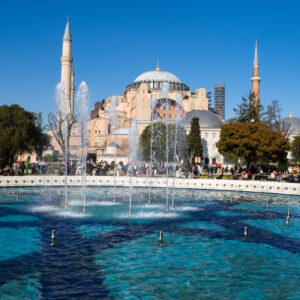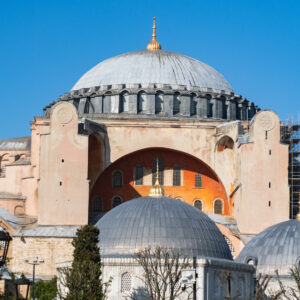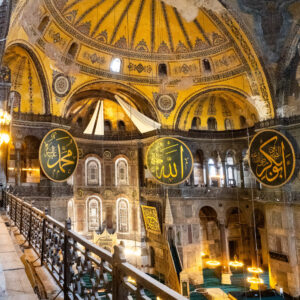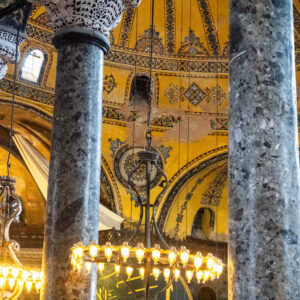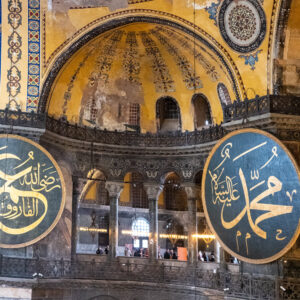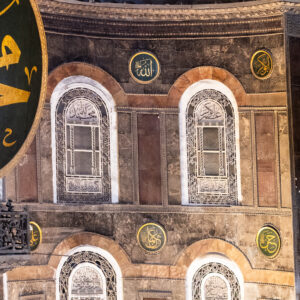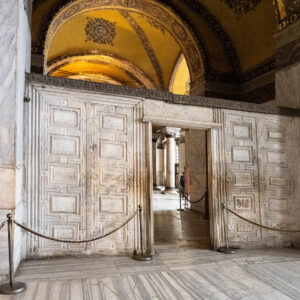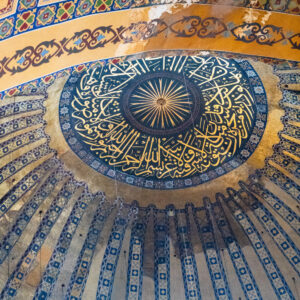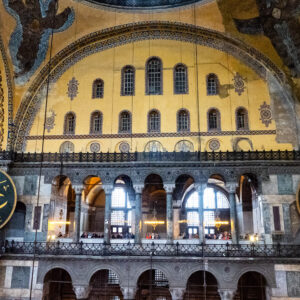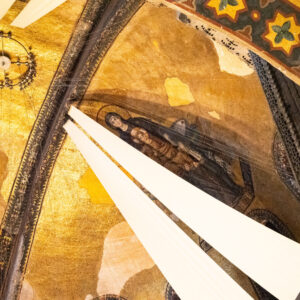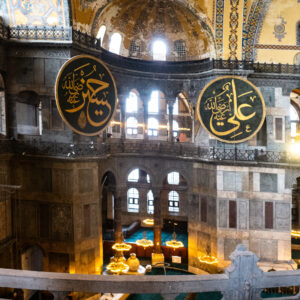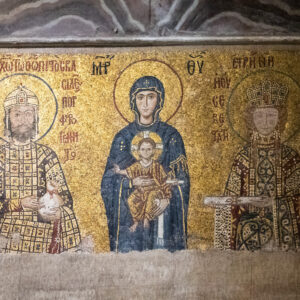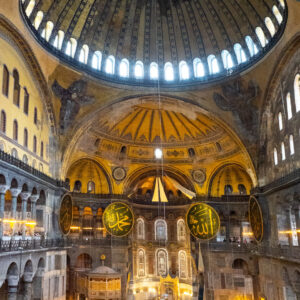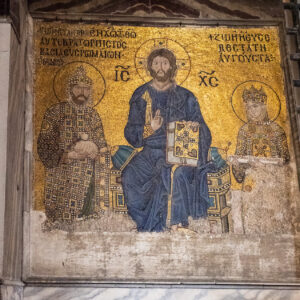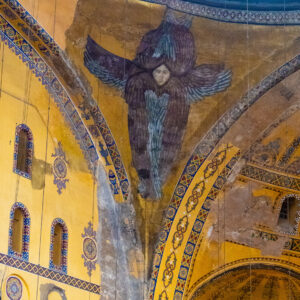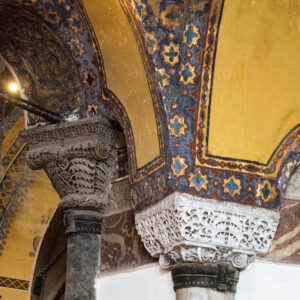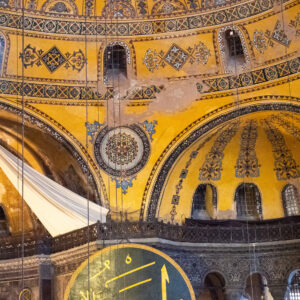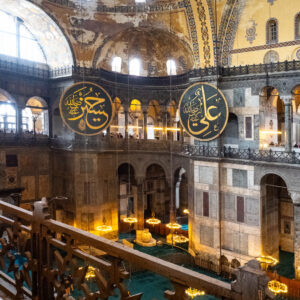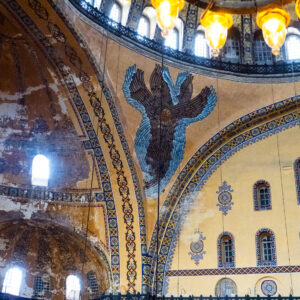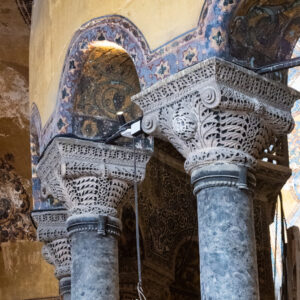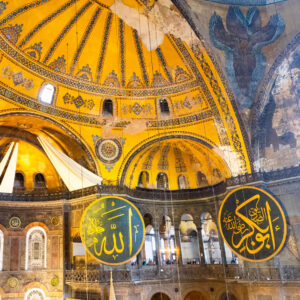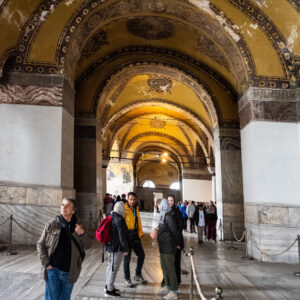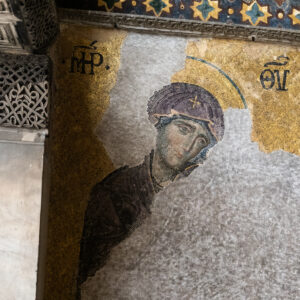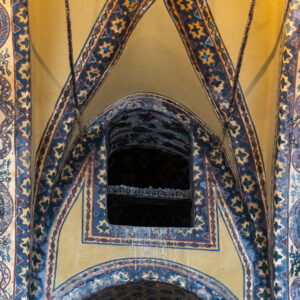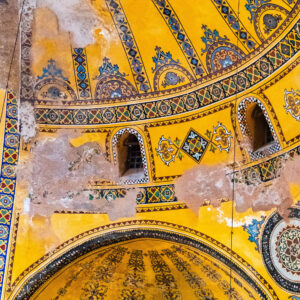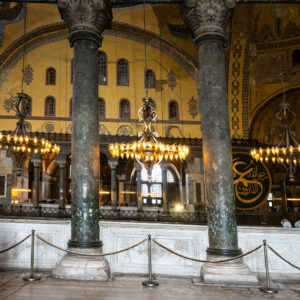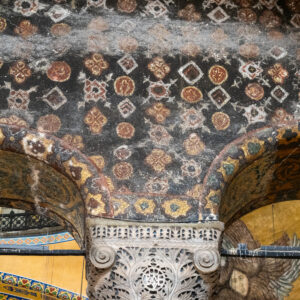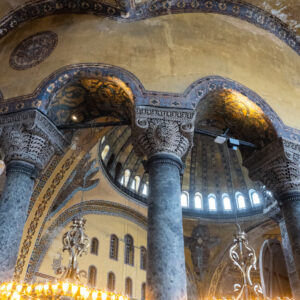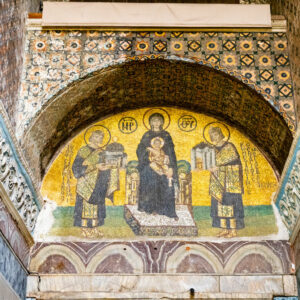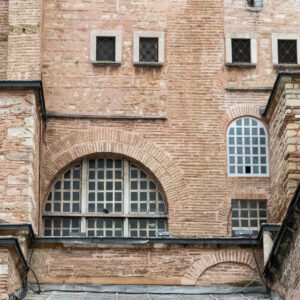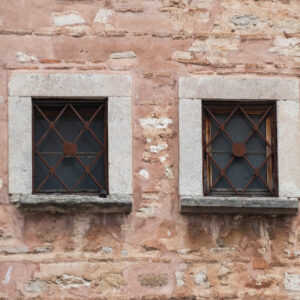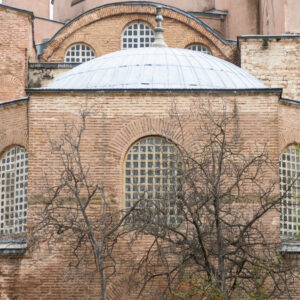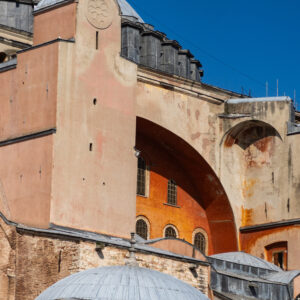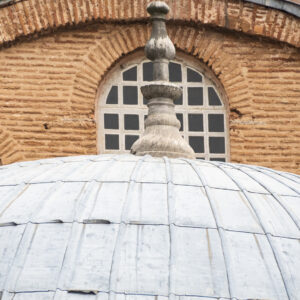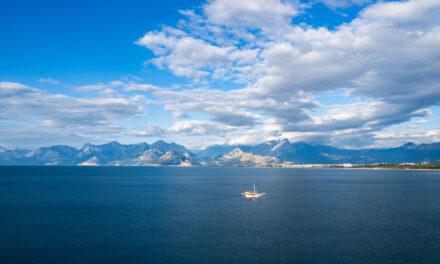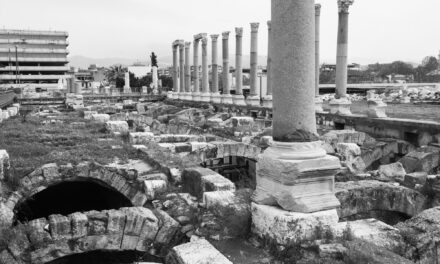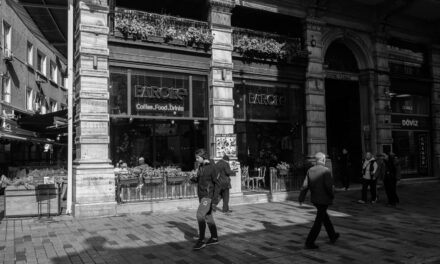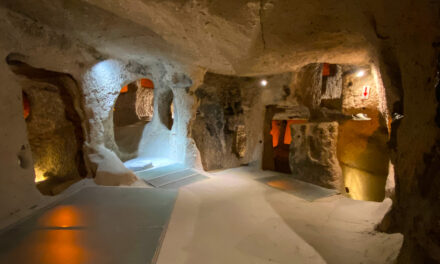Hagia Sophia
When planning my trip to Istanbul, I knew I wanted to stay near the city’s most iconic landmarks—Hagia Sophia, the Blue Mosque, and Topkapi Palace. From my base in the historic Sultanahmet neighborhood, I set out to photograph Hagia Sophia at sunrise, after rain, and under clear blue skies. Each time of day brought out a different texture, color, and mood in this ancient masterpiece.
Stepping inside Hagia Sophia early one morning—before the crowds arrived—was unforgettable. Built in 537 CE under Byzantine Emperor Justinian I, Hagia Sophia was originally constructed as a Christian cathedral. It remained the largest church in the world for nearly 1,000 years. In 1453, after the Ottoman conquest of Constantinople, it was converted into a mosque by Sultan Mehmed II.
What makes Hagia Sophia especially fascinating is the coexistence of Byzantine mosaics and Ottoman Islamic architecture. The original Christian mosaics—depicting Christ, the Virgin Mary, and saints—were not destroyed but carefully plastered over by the Ottomans. This act of preservation allowed them to survive intact beneath the surface for centuries.
In the 1930s, during the secular reforms of the Republic of Turkey, Hagia Sophia was transformed into a museum. Restoration efforts uncovered many of these mosaics, including the famous Deësis mosaic of Christ flanked by the Virgin Mary and John the Baptist. Since 2020, Hagia Sophia has resumed functioning as a mosque, yet many of the historic mosaics remain visible, balancing spiritual practice with cultural heritage.
Standing inside, you feel the weight of nearly 1,500 years of history. Hagia Sophia is not just a historic site—it’s a living symbol of Istanbul’s layered past, where Christianity and Islam meet, and Byzantine and Ottoman architecturecoexist under one dome.
For any traveler, photographer, or history lover, Hagia Sophia is a must-see—a place where empires rise, art endures, and faith lives on.
